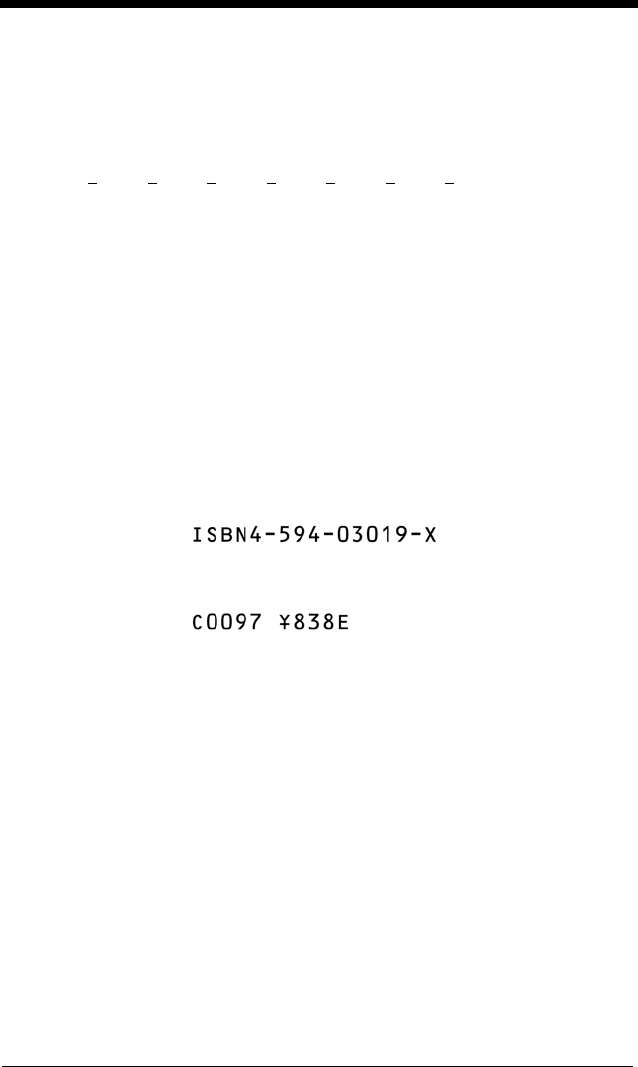
9 - 11
Then scan the string below:
0128454
The reader performs the check character computation below:
(0 x
1 + 1 x 2 + 2 x 1 + 8 x 2 + 4 x 1 + 5 x 2 + 4 x 1) modulo 10
= (0 + 2 + 2 + (1 + 6) + 4 + (1 + 0) + 4) modulo 10
= 0
Since the result is zero, the message is considered to be valid, so the reader
outputs the message: 012845
OCR ISBN Application Example
One application of OCR is to read the ISBN characters typically encoded using
the OCR-A or OCR-B font. This is especially useful when the ISBN number is
not encoded in an EAN-13 barcode. The following example shows how to con-
figure the imager to read the ISBN strings on books in Japan. After you have
followed the steps below, you will be able to scan the following ISBN number or
the additional data below it, depending on the line of text at which the imager is
aimed.
1. Scan the OCR-B On barcode on page 9-2.
2. Program the user-defined variable “g” to comprise the ten digits plus the
dash:
0123456789-
3. In Japan, it is common for two fields to follow the ISBN number, the three
digit price field, and the four digit price field. The first field typically starts
with a “C” (uppercase c), followed by four digits. The second field typically
starts with a “P” or a yen symbol, followed by three or four digits, followed by
an “E.” Program the user-defined variable “h” to comprise the “P” and the
yen symbol (represented by a backslash).
P\


















